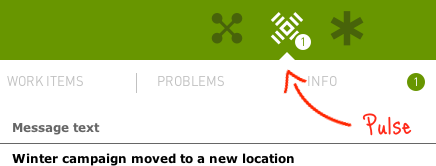Five tips about writing for translation
It is not easy to write text that translates well. We just started translating Magnolia CMS documentation into Chinese. Here are five insights we learned on the way that make work easier for authors and translators.
1. Chinese Wikipedia is your friend
Many software terms are well known in their original English form and may not need translation. For proprietary and established terms, check if Chinese Wikipedia translated them.
If Wikipedia translates the term, you probably should too:
If Wikipedia does not translate the term, you likely don't need to either.
Using commonly accepted, established terms avoids a lot of confusion. Users who read general documentation about the Java platform and Web technologies can apply the terms they learned.
2. Lower case and upper case don't exist in Chinese
In English we use capital letters to distinguish proper nouns from common nouns. For example, we call the Magnolia message center the "Pulse". It is called the Pulse because it gives you vital information about the state of the system and your workload. When you hold a finger on someone's wrist you get an overall idea of how well they are doing: no pulse = not good. Similarly, the Pulse informs you about tasks and issues you must address.
All clear? Good.
In Chinese, the pulse on your wrist and the Pulse are both 脉搏. Same word, identical spelling. Chinese readers cannot tell the difference. Funny as it may be, if they saw a literal translation of "Go to the Pulse and..." they might check their wrist and feel confused.
In translation we left the English word intact and qualified it. Pulse 信息中心 ("Pulse messaging center") implies that Pulse is a term that has a special meaning.
3. Cultural jokes don't work
Jokes, puns and expressions that rely on colloquial English translate poorly. Even if the translator knows the meaning of the English expression, there may not be an equivalent in the target language.
This is usually not a big problem in technical texts which are matter-of-fact and contain few cultural references. But as a writer you need to be alert. We got caught by two obscure expressions in one week: Location, location, location and on-the-fly.
4. Identify text that doesn't need to be translated
If readers never see the text, why translate it? An example is our Inclusions library where we keep reusable chunks of content. We include the content on other pages. Reuse prevents duplication and makes changes easier - you change the chunk once and the change propagates to wherever the chunk is used.
The inclusion library page and its children are not displayed in the table contents. In fact, readers actually never hit those pages. The library is just an organizational tool for us editors.
So we did not translate any inclusion library page titles. We only translated the body text of each chunk since that's what gets blended into Chinese context. This saves us a little bit of time. Interestingly, it is also the only section of Chinese documentation that non-Chinese speakers can still easily identify thanks to the English page titles.
5. Get help
This last tip is not about writing but the translation process.
Hire a native speaker with translation experience. I was fortunate to find a Chinese translator who has worked on the Java platform. She is Web-savvy and is planted right in the Magnolia development team in Beijing. Reachable directly, no looping through middlemen, fast turnaround. This arrangement is working very well.
We also chose a translation agency in case we need to farm out lots of text on a tight deadline. The agency is based in China. We did the homework and had several agencies submit samples, then picked the best.
Got tips about writing text that translates well? Leave a comment.


